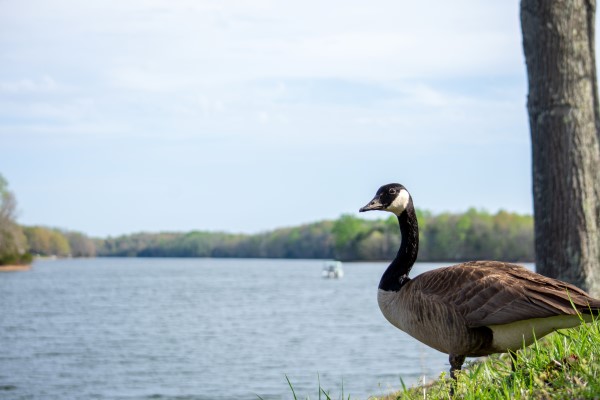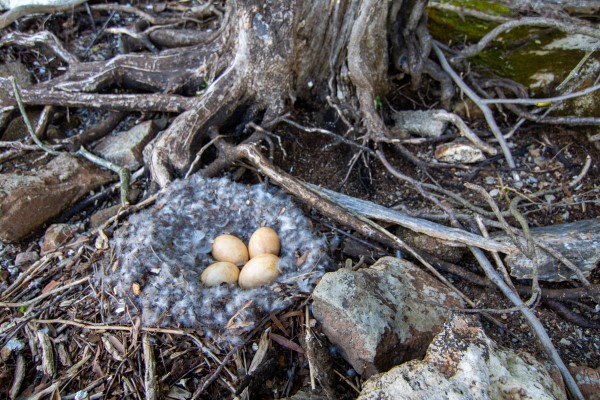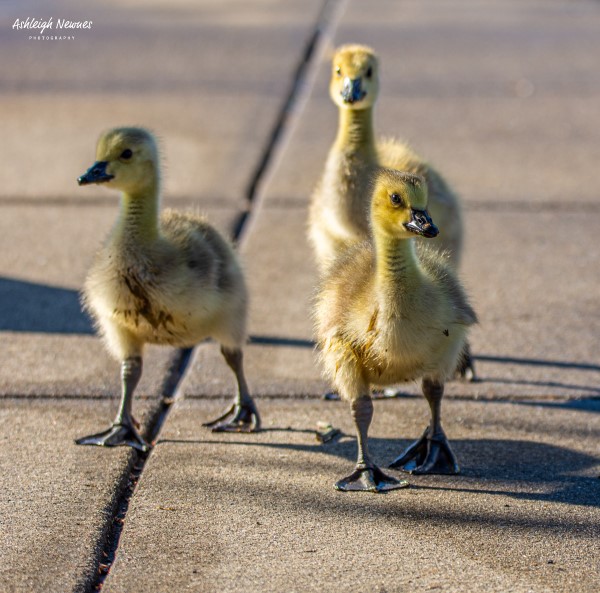
When you hear the honk of the Canada geese, you know it’s time to start thinking about unearthing all the hats, scarves and gloves for the upcoming change in season.
Groups of these three-feet-long waterfowl, with their five-foot wingspan, are a common skyward sight this time of year. In V-formation, the Canada geese migrate south to overwinter and many geese will follow the same route year after year.
The V-shape serves two purposes. It conserves their energy; each bird flies slightly above the next bird in front of them resulting in a reduction of wind resistance. The birds take turns being in the front and falling back when they get tired. This means the group can fly for long periods of time without stopping for rests. Another benefit to flying in a V-shape is the ease of tracking the other birds in the group. Flying in formation assists with the communication and coordination within the group. Fighter pilots often use this formation for the same reason.

Photos by Ashleigh Newnes
Geese are fairly commonly spotted especially in the summer, swimming in open water, resting near shore, or grazing on lawns or farm fields, but the V-formation in the sky is always a sight to behold. Find geese in lakes, ponds, bays, marshes and fields. They have adapted well to civilization and urbanization and can also be found nesting around park ponds or golf courses. There is a family of geese at Murfree Spring on Southeast Broad Street and spectators have enjoyed watching the hatchlings grow this year.
Primarily herbivores, geese forage mostly by grazing while walking on land, but they also feed in water by submerging their head and neck. Serrated edges along their bills enable them to tear up plant matter. They eat stems and shoots of grasses and sedges, aquatic plants, seeds, berries, and cultivated grains, occasionally eating insects, mollusks, crustaceans and small fish.

Canada geese usually mate for life and the pair maintains a strong bond. Ganders (males) become aggressive in breeding territories and it’s this behavior that has caused the geese to get a bad rap from humans. He defends his territory with displays including hissing and lowering his head almost to the ground with his bill slightly raised and open.
The nest site is chosen by the female and is usually on slightly elevated dry ground near water. The female will usually come back to the same nesting site year after year. Females lay anywhere from 2–11 large white eggs. She then incubates the eggs for 25–28 days while the male stands guard. A Canada geese family unit has a strong and tight bond with excellent parenting and teaching from the adults, and fast learning and adaptability from the younglings. Parents lead the young away from the nest just 1–2 days after hatching. Both male and female tend to the young, yet the young feed themselves. In just 7–9 weeks, the hatchlings are ready for their first flight.

This time of year is a busy time for the animal kingdom. Some creatures, like the geese, are traveling south for overwintering in the warmer climates, others are busy packing on the pounds and preparing their winter homes for hibernation. Aside from providing birdhouses, the easiest way to assist our animal friends is to leave your garden and yard undisturbed during winter. Piles of leaves or brushwood can provide a perfect place for animals where they can hide, rest and hibernate.












